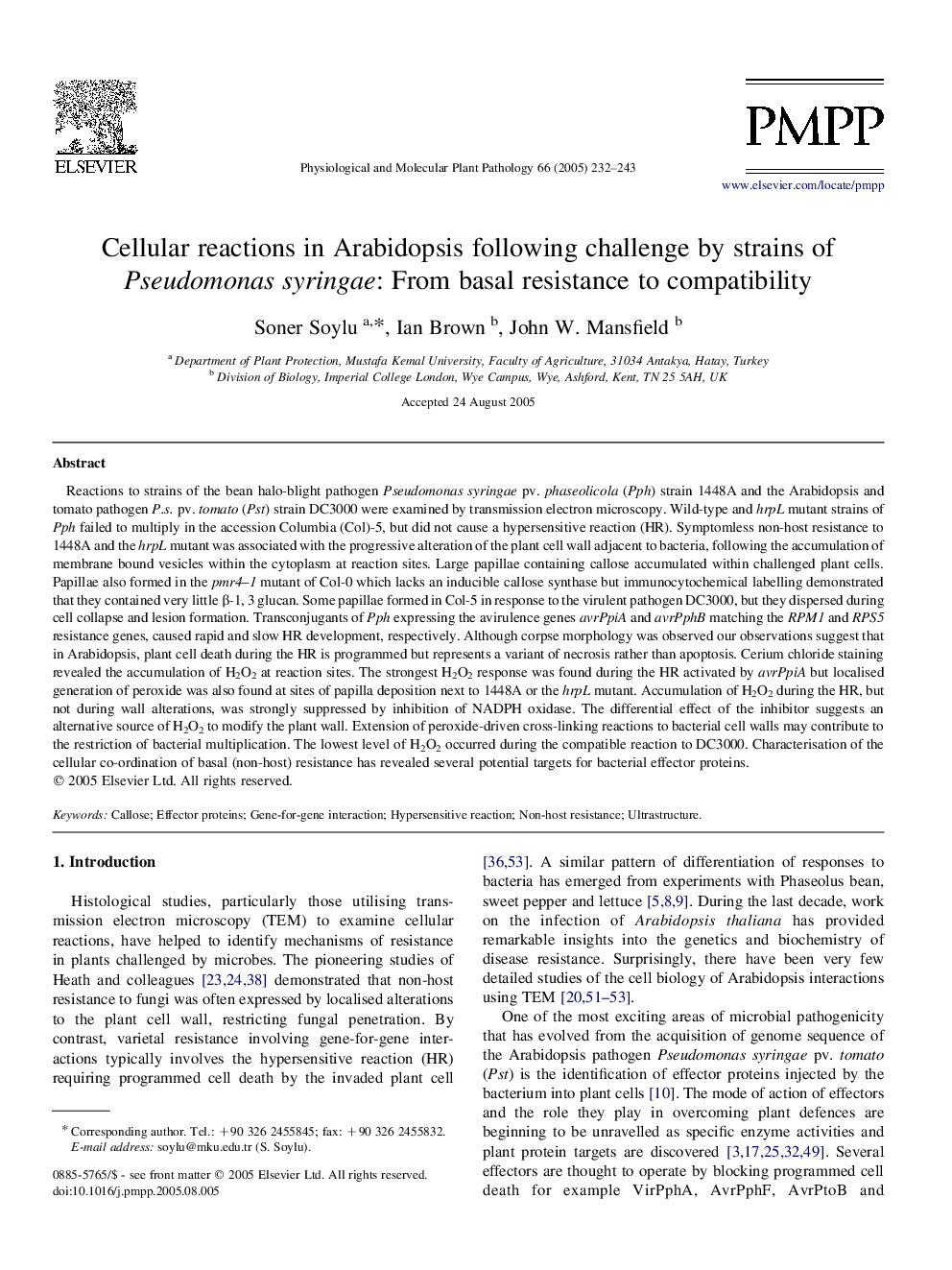| کد مقاله | کد نشریه | سال انتشار | مقاله انگلیسی | نسخه تمام متن |
|---|---|---|---|---|
| 9144676 | 1164531 | 2005 | 12 صفحه PDF | دانلود رایگان |
عنوان انگلیسی مقاله ISI
Cellular reactions in Arabidopsis following challenge by strains of Pseudomonas syringae: From basal resistance to compatibility
دانلود مقاله + سفارش ترجمه
دانلود مقاله ISI انگلیسی
رایگان برای ایرانیان
کلمات کلیدی
موضوعات مرتبط
علوم زیستی و بیوفناوری
علوم کشاورزی و بیولوژیک
دانش گیاه شناسی
پیش نمایش صفحه اول مقاله

چکیده انگلیسی
Reactions to strains of the bean halo-blight pathogen Pseudomonas syringae pv. phaseolicola (Pph) strain 1448A and the Arabidopsis and tomato pathogen P.s. pv. tomato (Pst) strain DC3000 were examined by transmission electron microscopy. Wild-type and hrpL mutant strains of Pph failed to multiply in the accession Columbia (Col)-5, but did not cause a hypersensitive reaction (HR). Symptomless non-host resistance to 1448A and the hrpL mutant was associated with the progressive alteration of the plant cell wall adjacent to bacteria, following the accumulation of membrane bound vesicles within the cytoplasm at reaction sites. Large papillae containing callose accumulated within challenged plant cells. Papillae also formed in the pmr4-1 mutant of Col-0 which lacks an inducible callose synthase but immunocytochemical labelling demonstrated that they contained very little β-1, 3 glucan. Some papillae formed in Col-5 in response to the virulent pathogen DC3000, but they dispersed during cell collapse and lesion formation. Transconjugants of Pph expressing the avirulence genes avrPpiA and avrPphB matching the RPM1 and RPS5 resistance genes, caused rapid and slow HR development, respectively. Although corpse morphology was observed our observations suggest that in Arabidopsis, plant cell death during the HR is programmed but represents a variant of necrosis rather than apoptosis. Cerium chloride staining revealed the accumulation of H2O2 at reaction sites. The strongest H2O2 response was found during the HR activated by avrPpiA but localised generation of peroxide was also found at sites of papilla deposition next to 1448A or the hrpL mutant. Accumulation of H2O2 during the HR, but not during wall alterations, was strongly suppressed by inhibition of NADPH oxidase. The differential effect of the inhibitor suggests an alternative source of H2O2 to modify the plant wall. Extension of peroxide-driven cross-linking reactions to bacterial cell walls may contribute to the restriction of bacterial multiplication. The lowest level of H2O2 occurred during the compatible reaction to DC3000. Characterisation of the cellular co-ordination of basal (non-host) resistance has revealed several potential targets for bacterial effector proteins.
ناشر
Database: Elsevier - ScienceDirect (ساینس دایرکت)
Journal: Physiological and Molecular Plant Pathology - Volume 66, Issue 6, June 2005, Pages 232-243
Journal: Physiological and Molecular Plant Pathology - Volume 66, Issue 6, June 2005, Pages 232-243
نویسندگان
Soner Soylu, Ian Brown, John W. Mansfield,